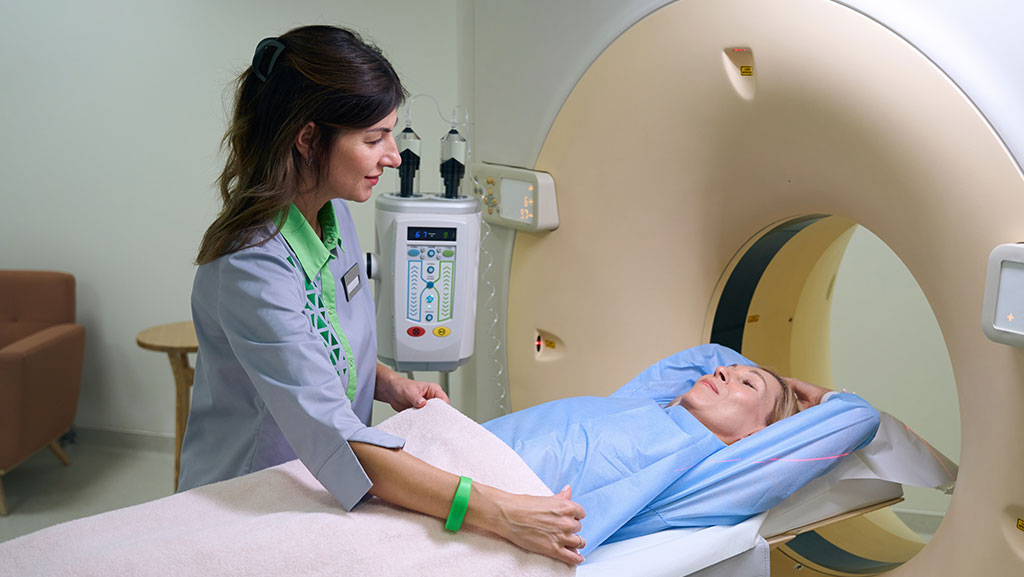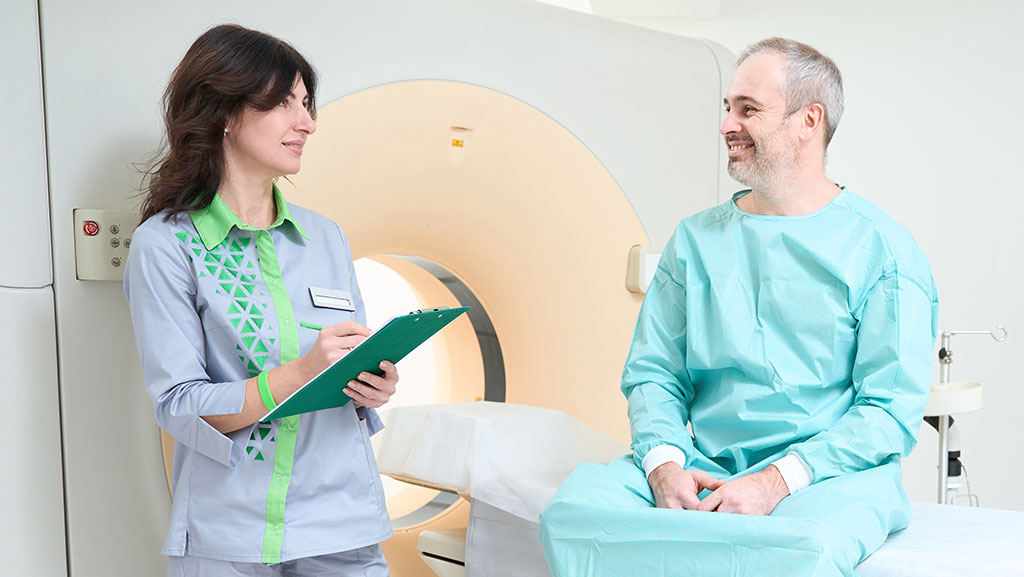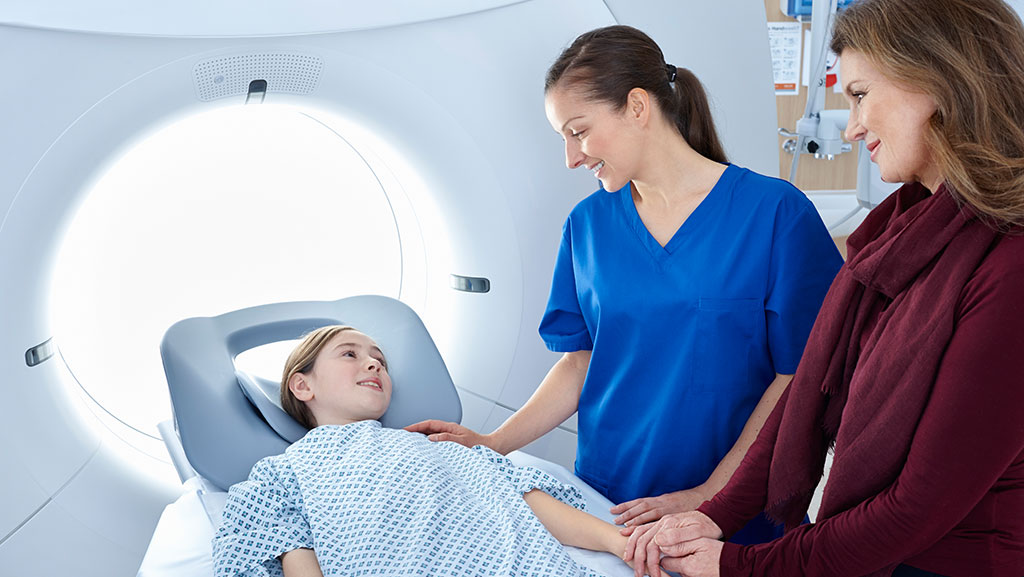When you are scheduled for a Magnetic Resonance Imaging (MRI) exam, you may feel worried about what the experience will be like. You might wonder about the loud sounds, the narrow tube, or how long you must stay still. These thoughts can make you feel uneasy. But the good news is: there are many comfort measures you can use and your imaging team can help you so your MRI is calm, smooth, and successful.
Undergoing an MRI can feel scary or uncomfortable for many people. The reasons include the machine’s environment, the need to stay still, and sometimes feeling anxiety or claustrophobia. Modern MRI suites are designed to improve patient comfort, with features like better ventilation, blankets, cushions, and clear communication from your technologist.
By taking steps before, during, and after your scan, you can help make the exam more comfortable, reduce your worry, and help the imaging team get clearer images. That means less risk of a repeat scan, less time in the machine, and a better experience overall. This article will walk you through what makes MRI uncomfortable, and then show you what you can do to feel better from pre‑scan preparation, to comfort aids during the scan, to caring for special cases so you feel in control and supported at every stage.
1. Understanding What Makes MRI Uncomfortable
When you go for a Magnetic Resonance Imaging (MRI), you might feel uneasy. Knowing why can help you feel more prepared and calm.
1.1 Physical factors
The MRI machine has a long, narrow tube, and this can feel like being in a small room. This may cause feelings of confinement or Claustrophobia. The machine also makes very loud noises, and you must lie very still for a while. These physical factors add up, especially if you are in an older-style scanner. Sometimes the table can feel hard, or the positioning may be awkward for your body. If the padding, blanket, or cushion is not right, you may feel more discomfort.
1.2 Psychological & emotional factors
Going into an MRI can bring worries. You may wonder: “What if I can’t stay still?”, “What if I am stuck?”, “What if the results are bad?” These kinds of thoughts cause anxiety. Also, if you don’t know what to expect, what noise you’ll hear, how long you’ll be still, what the machine is like, you might feel even more uneasy. Being informed helps.
1.3 Impact of discomfort on scan outcomes
When you feel uncomfortable or anxious during an MRI, you may unintentionally move. That movement can cause motion artefacts, meaning the images may blur and the scan may need to be repeated. Also, if the patient experience is bad, then cooperation can drop. The technologist may need to pause or stop the scan early. This leads to extra time, increased costs, and less accurate results. So, reducing discomfort is not just about you feeling better, but it also helps the imaging team get better quality images and complete the scan smoothly.
2. Pre‑Scan Comfort Measures
When you are about to have your MRI, there are ways to feel more at ease. These steps cover how you can prepare and what the imaging team can do for MRI patient comfort.
2.1 Education & Communication
Before your scan, it’s helpful when the staff explain what will happen. According to the experts, understanding what to expect can make the experience calm and manageable. You should ask questions and talk about any worries, like claustrophobia, the narrow tube, or the loud sounds. Clear communication helps build trust.
2.2 Preparing Physically
Wear clothes that are comfortable and free of metal fasteners (no zippers, no hooks) because metal affects the scan. You’ll be asked about any implants or medical devices you have this is part of the screening process to ensure safety. You may change into a gown provided by the facility, and you’ll remove jewellery, watches, belts, or anything metal.
2.3 Mental Preparation & Relaxation
You can try breathing techniques or guided imagery before the scan to reduce anxiety. The team at Smith Chason College suggests simple meditation or visualization to relax your mind. Imagine a calm place like a forest, beach, favorite room to help your thoughts stay away from the scan. If you feel a lot of anxiety, tell your doctor ahead of time. Options like a mild sedative may help.
2.4 Choosing the Right Facility/Equipment
Ask about the type of MRI machine: some have a wide bore, or open design, which can reduce feelings of being enclosed. Check if your imaging centre offers music, cushions, warm blankets, or headphones for sound reduction. These comfort aids can make a big difference.
3. During the Scan: Comfort Measures Inside the Bore

When you’re in the actual scan of the Magnetic Resonance Imaging (MRI), it’s very important to use comfort measures. These help you feel safe, calm, and still which also helps the scan go better.
3.1 Physical Comfort Support
Inside the scan machine, the table may feel hard, the room may feel cold, and you may need to lie in one position for a while. To make it better:
- Ask for a blanket or warm cover if you feel chilly.
- Use cushions and pads to support your head, knees, or back so you don’t feel pressure.
- Let the technologist know if you’re uncomfortable or need a quick break.
These comfort aids help you relax physically, lowering the chances of moving during the scan.
3.2 Communication & Control
Feeling like you have some control helps reduce anxiety. During the scan:
- You will usually have a call‑button or “call ball” to squeeze if you need the technologist’s help or want to stop for a moment.
- The technologist will stay in visual contact and talk to you via intercom so you’re not alone.
- You can ask questions before the scan starts: “How long will this part take?” “When will I hear the loud noises?”
This communication gives you power and reassures you that the staff cares about your comfort.
3.3 Visual & Auditory Comfort Aids
The MRI machine is noisy and can feel confining. A few tricks:
- Use earplugs or headphones to reduce noise or even listen to calm music during the scan.
- If offered, watch videos or use ambient lighting in the suite to distract your mind.
- Close your eyes or wear a light eye mask if the tunnel of the MRI makes you feel trapped.
These sensory aids keep your brain focused away from the machine and help you stay still.
3.4 Staying Still Yet Relaxed
Staying still is one of the most important parts of a successful scan. Here’s how to do it:
- Breathe slowly and gently; a calm breath helps your body relax while you lie still.
- Think of a pleasant image (a beach, forest, or favorite room) to keep your mind relaxed.
- Use a support item like a small cushion or stress ball if you feel muscle tension.
- If something hurts or you’re very uncomfortable, press the call button. The technologist can stop or adjust your position.
Being relaxed and still means better image quality and fewer repeats.
3.5 Special Considerations (Claustrophobic or Anxious Patients)
If you suffer from claustrophobia or heavy anxiety, there are extra comfort measures:
- Ask if an open MRI machine or wide‑bore MRI scanner is available these give more space and less of a “tunnel” feeling.
- Talk to your doctor ahead of time about whether a mild sedation could help you complete the scan more comfortably.
- Consider having a support person in the room (if the facility allows it) to hold your hand or reassure you during the scan.
These options help you feel safer and reduce the chance you’ll need to stop the scan early.
4. Post‑Scan & Recovery Comfort Measures
After your MRI scan, there are still important comfort measures that help you feel better and support your recovery.
4.1 Gentle exit from the scanner
Once the scan ends, staff should help you get off the table slowly and safely. Make sure you feel steady when you sit up and leave the bore. If you had to lie still for a long time, your muscles or back might feel stiff. Asking for a short break or quick stretch helps.
4.2 Checking how you feel & giving feedback
The staff should ask how you feel for example: Do you feel any pain, dizziness, clammy skin, or continuing anxiety? You should feel free to express any discomfort. A study of patient satisfaction found that most patients were comfortable during and after MRI when staff took time to check in. Also, your feedback matters. Many clinics now ask for patient feedback post‑scan so they can improve comfort for future patients.
4.3 De‑briefing & results waiting
After your comfort is checked, someone should explain what will happen next: when you’ll get results, any instructions for you (e.g., about in‑bed rest or hydration), and when you can resume normal activities. Knowing this helps reduce post‑scan anxiety.
4.4 Managing lingering discomfort or anxiety
Some people may still feel uneasy, especially those with prior claustrophobia, anxiety, or who had long scan times. For them:
- Use a warm blanket or padded chair in the recovery area if you felt cold or stiff.
- Gentle stretching or walking helps loosen your muscles.
- If you had sedation or anxiety medications, follow staff instructions about rest and driving.
4.5 Encouraging future comfort and cooperation
Your good experience helps you when you may need another scan in the future. A comfortable experience means: you feel more confident next time; you are better at staying still; the imaging centre can get better quality images and fewer repeats. Clinics that use wide‑bore MRI scanners, open machines, or comfort‑focused gear see fewer repeat scans because patients move less.
5. Special Patient Populations & Specific Challenges

When it comes to comfort measures during an MRI, some patients need extra care. These include children, plus‑size or bariatric patients, people with claustrophobia, and those with implants or mobility issues. Below are key points you should know.
5.1 Children & Adolescents
Working with children for an MRI can be harder than with adults, but the right comfort measures help a lot.
- A child‑life specialist or trained MRI team member can talk with the child about what will happen. They’ll explain in simple words so the child is less scared.
- Use preparation tools like sound clips of the MRI machine, games where the child lies still, or a “mock tunnel” in the home so the child knows what to expect.
- Children may need special equipment (coils sized for kids, shorter scan times) or even sedation if they cannot lie still safely.
- Let a parent or companion be present if the facility allows: this supports the child’s comfort and cooperation.
5.2 Obese or Large‑bodied (Bariatric) Patients
For patients with larger bodies or higher weight, comfort and safety require special attention.
- Many MRI machines have weight limits (e.g., 350‑450 pounds) and may feel very tight for large bodies.
- Use of a wide‑bore MRI scanner or even an open MRI machine can reduce the feeling of being stuck or cramped and help reduce discomfort.
- Custom cushions, coils made for larger bodies, better ventilation, and monitoring for skin contact or heat build‑up are important for patient comfort and scan safety.
5.3 Claustrophobic or Anxious Adults
Many adult patients feel anxiety or claustrophobia when entering the machine. Acknowledging this and using comfort measures makes a big difference.
- Consider asking about machines with larger openings (wide bore) or ones described as “ambient experience MRI” to reduce the tunnel feeling.
- Simple reassurance, using headphones/earplugs, asking the staff for frequent updates (“how long till next sequence?”), and reminding you have a call button gives you more control.
- If anxiety is very high, discuss the possibility of a mild sedation with your doctor but comfort measures should be tried first.
5.4 Patients with Implants, Devices, or Mobility Issues
If you have medical implants (pacemaker, artificial joint, etc.) or trouble lying flat or moving easily, extra preparation is required.
- Make sure full screening is done for any metal objects, implants, or devices. This screening helps ensure safety and comfort.
- Positioning aids, extra cushions, support for limbs, and checking for mobility constraints help you lie comfortably and reduce the risk of discomfort during the scan.
- Communication is key: tell the technologist if you feel pain, numbness, pressure, or if you cannot hold the required position without strain.
6. Role of the Imaging Facility & Technologist in Comfort
When you go for a scan with the Magnetic Resonance Imaging (MRI), much of how comfortable you feel depends on the facility and the technologist helping you. Here is how they play a key role in your comfort.
6.1 Facility design and environment
- The imaging centre should have a calm, inviting space from the waiting room to the scan room. Features like soft colours, quiet ventilation, and short wait times make a big difference.
- The MRI suite should be designed so that you feel safe and relaxed. For example, fewer steps between check‑in and scanning, clear signage, and minimal noise.
- The equipment matters: modern scanners with wide‑bore openings or open MRI designs can help reduce the enclosed feeling and improve comfort for patients with anxiety or larger bodies.
6.2 Technologist communication & support
- The technologist should introduce themselves, explain the process in simple terms, and ask about how you’re feeling. This builds trust and helps reduce anxiety.
- During the scan, the technologist should maintain contact via intercom or direct communication and ensure you know how to use the call‑button if needed. Clear communication improves the patient experience.
- They should also be trained in comfort and safety protocols: using cushions and positioning aids, adjusting temperature or lighting, and understanding how to support those with claustrophobia, pain, or mobility issues.
6.3 Equipment and ergonomic aids
- The facility should have positioning aids like cushions, pillows, pads, and leg supports so you lie comfortably without pressure points or strain. Good positioning reduces movement and thus improves image quality.
- Noise reduction is important: the machine’s loud sounds and motion can increase discomfort. Facilities offering earplugs, headphones, or quieter MRI machines help significantly.
- For patients with special needs (children, obese, anxious), the facility should have options like sedation if needed, and staff who are trained to support these situations.
6.4 Facility culture & feedback loop
- A facility committed to patient comfort will ask for patient feedback after the scan to improve. How did you feel? What could be better? This helps the imaging centre evolve.
- The culture should be one of empathy, patience, and personalized care not just doing the scan but making sure you feel safe. Research shows that when facilities focus on comfort, patient cooperation improves, and scan outcomes are better.
7. Checklist for Patients: “What to Ask / What to Expect”

Here is a handy checklist you can use when you’re preparing for your Magnetic Resonance Imaging (MRI) scan. It uses simple language and covers what you should ask and expect for better patient comfort, making your visit easier and calmer.
What to Ask the Facility or Technologist
- What type of MRI machine will I be using? Is it a wide‑bore MRI scanner or an open MRI machine?
- Can I listen to music or use headphones during the scan to help with noise?
- What comfort aids do you provide, e.g., blanket, pillow, cushions, earplugs?
- How long will the scan last? Are there breaks or ways to split up a long exam?
- What happens if I feel anxiety, claustrophobia, or physical discomfort during the scan?
- Is a support person allowed in the scan room (especially if I feel nervous or have special needs)?
- Will there be an intercom or call button so I can communicate with the technologist inside the machine?
- Do I need to remove any metal, jewellery, devices, or clothing with metal? Are my implants/device safe?
What You Should Expect and Be Prepared For
- Arrive a bit early, there will be check‑in, screening, and forms.
- You’ll change into a gown or wear clothing with no metal. Remove jewellery, watches, phones, and keys.
- The MRI machine will make loud noises (knocks, thumps). You’ll likely be given earplugs or headphones.
- You’ll need to lie very still for the best images. Movement can cause blurry results and sometimes repeat scans.
- If a contrast agent (dye) is required, there will be an IV, and you might feel a cold sensation.
- After the scan, you’ll change back, and in most cases, you can go home or resume normal activity unless your doctor says otherwise.
Extra Tips for Better Comfort
- Bring a list of any implants, devices, or medical conditions, these matter for safety and comfort.
- Wear loose, comfortable clothing without metal fasteners.
- If you feel anxiety or claustrophobia, inform the staff ahead of time, they can offer alternatives like open MRI, sedation, or extra comfort measures.
- Practice breathing and relaxation techniques before the scan so you stay calm when you lie down.
- Use visualisation (imagining a peaceful place) or count backwards to distract your mind if you feel nervous.
- After the scan, ask how you’ll get your results and who will talk you through them.
8. FAQ & Myth‑Busting
Q1: Will the MRI be painful?
No, an MRI (Magnetic Resonance Imaging) is painless. You might hear loud noises or feel a bit cold, but you should not feel pain.
Q2: What if I’m worried about being in a small space (claustrophobic)?
If you have claustrophobia, tell your doctor or technologist. Many centres offer wide‑bore MRI scanners or open MRI machines, and you may be given a blanket, get to listen to music, or bring a support person with you.
Q3: Will I feel the magnet pull or move me?
No. You will not feel the magnet pull you. The table moves, and you hear the machine, but you will not feel the magnet dragging or pressing you. It is safe.
Q4: I have metal implants/devices, can I still have an MRI?
Yes, usually but you must tell the technologist about any implants, devices, or metal in your body before the scan. They will check if your device is MRI‑safe and pick the right protocol.
Q5: Why do I need to stay so still during the scan?
Staying still helps get a clear image. If you move, you may cause motion artefacts, which can blur the picture and mean the scan must be done again.
Q6: Can I bring a friend or family member into the scan room?
Sometimes yes. Many centres allow a support person if they also follow the safety rules (no metal, screened for MRI). This may help you feel more comfortable.
Q7: Are there comfort aids available?
Yes, you can ask for a blanket, pillow, cushions, earplugs, or headphones with music. These comfort aids help reduce distraction from the machine, noise, or cold.
Q8: How long will the MRI take?
It depends on what body part is being scanned, but many scans take 15‑90 minutes. You will be told an estimated time ahead of the exam.
Q9: Will I immediately get the results of the scan?
The images are reviewed by a radiologist; then your doctor will talk to you about the results. You usually cannot expect instant answers right after the scan.
Q10: Are the loud knocking noises dangerous?
No, the noises are normal and just a part of how the MRI machine works. You will have ear protection or music to help block the sound and stay comfortable.




